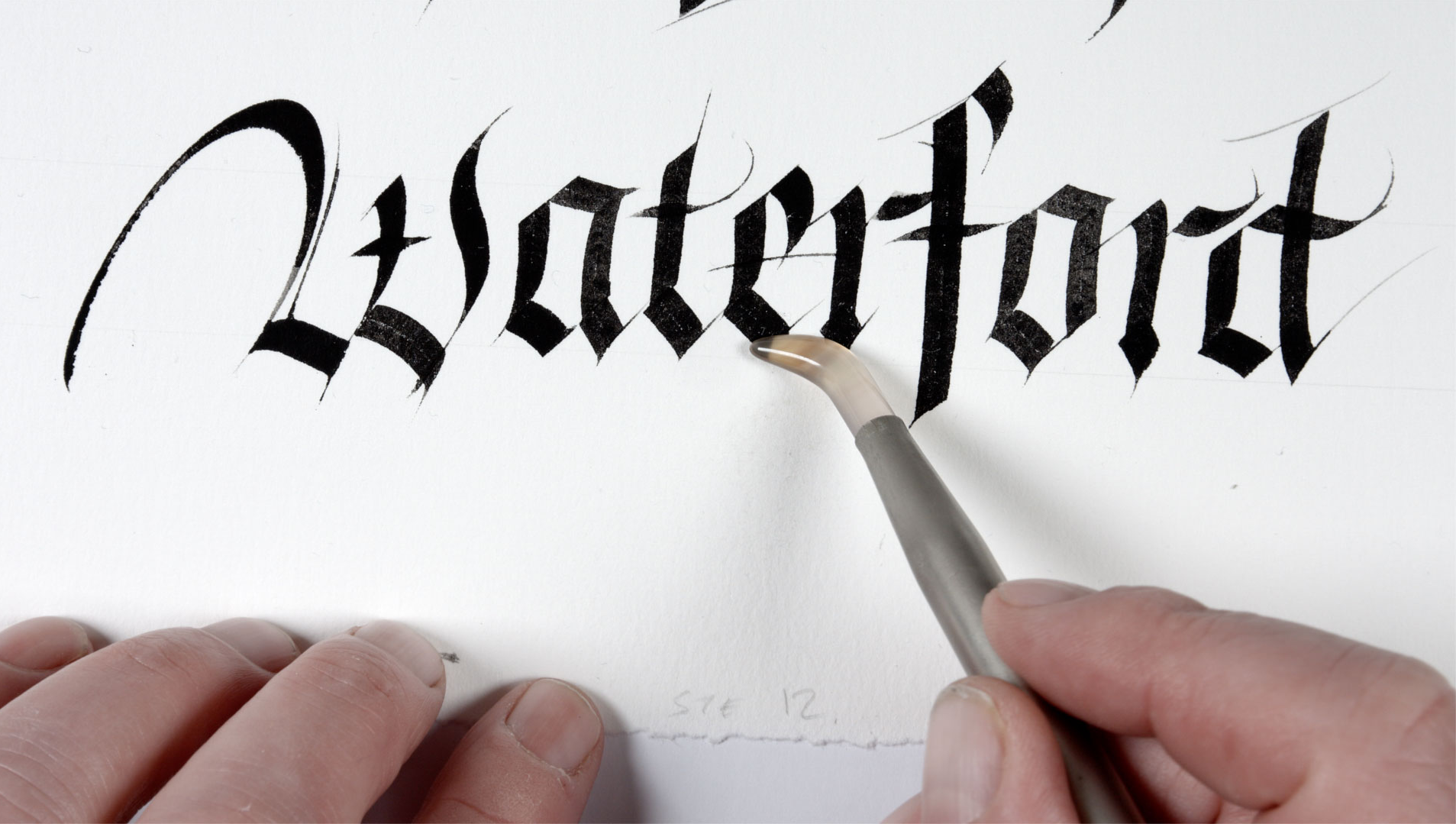
Medieval Pilgrimage and Pilgrim Badges
The poor, the fortunate, the barbarous, knights, foot soldiers, lords, the blind, those missing hands, nobles… bishops, princes abbots – some barefoot, some bound in iron chains in penance and weeping for their sins. This is a holy people, the people of God – 12th century account of pilgrims in Santiago de Compostela, Spain
The Middle Ages was an ‘age of faith’. Religion was central to everyday life and dominated every aspect of people’s lives Medieval Waterford supported fifteen churches and many of the streets were named after the churches which stood on them. Scholarship and learning, entertainment in the form of miracle plays and passion plays, as well as art and architecture, were all dominated by religion.
Pilgrimages were regarded as an important aspect of medieval Christianity. They were in fact seen as a holiday for the soul and more importantly, a way to do penance and seek God’s forgiveness for the sins of this life.
For medieval people, life itself was a journey – a pilgrimage as it were – and the ultimate destination on this journey was everlasting life in the Kingdom of Heaven after death. The most important pilgrimage sites were in Palestine – the ‘Holy Land’ – and sites there associated with the life of Jesus. The tomb of St. Peter, Rome, and the tomb of St. James the Apostle in Santiago de Compostela, Spain, were also popular pilgrimage destinations. In the Great Parchment Book of Waterford, there are records of Waterford pilgrims travelling by ship to Santiago de Compostela, including James Rice, the 15th century mayor of the city. However, there were many other pilgrimage sites throughout Europe. Following the murder of Thomas Becket, Archbishop of Canterbury, in 1170 by three knights believing they were acting on the wishes of King Henry II, his tomb in Canterbury became a centre of pilgrimage and inspired Chaucer’s famous poem about pilgrims going to his shrine, The Canterbury Tales.
A medieval pilgrimage however was not for the faint hearted. Pilgrimages were often uncomfortable. Pilgrims were expected to forego the pleasures of this life, to wear the clothes of the poor and eat plain food on long difficult journeys which could take many months to complete. It was expected that pilgrims would also spend long hours in prayer and fasting.
Pilgrimages could also be dangerous and shipwreck and attack by pirates were a constant danger. On overland routes, bandits preyed on the unsuspecting pilgrims.
Pilgrims wore special badges – known as pilgrim badges – to identify that they were engaged on a sacred mission and not wealthy merchants. They thus hoped to be spared from attacks by thieves on their travels. These badges were also manufactured at pilgrimage sites and were kept by pilgrims as souvenirs of their journey. The badges were usually made from metal in special moulds and examples of these moulds have been discovered by archaeologists near the abbey of Mont St. Michel in Normandy, France.
There are two pilgrim badges (pictured) on display in the Medieval Museum. Both date from the 13th century and were found by archaeologists during the course of the city centre excavations in Waterford.
The circular badge was discovered in the garden of a medieval house and shows the beheaded John the Baptist. It came from Amiens in the north of France. Amiens became a great centre of pilgrimage after 1206 when a relic of the saint was brought to the cathedral there following the sack of Constantinople in 1204 during the Fourth Crusade.
The square badge is unique. Neither the martyr referred to nor the location of the shrine has been identified. The Latin inscription records, THE SIGN OF JOHN CRUCIFIED BY THE JEWS AT P. This badge illustrates medieval anti-Semitism which was prevalent throughout Europe. Jews, for example, were falsely accused of sacrificing Christians in order to celebrate the Passover. This was one of the most important feast days in the Jewish calendar and celebrated their escape from slavery in Egypt led by Moses. If a Christian boy was found dead, Jews were often accused of his ritual murder and he was venerated as a saint as was the case of Little Hugh of Lincoln. This mistaken belief persisted in Europe up into the 20th century.
The 13th century date of this badge corresponds to a period of violent persecution of Jews in England during the reign of King Edward I. The king was deeply in debt by the 1270’s and was forced to introduce new unpopular taxes, such as the Great New Custom in 1275 on the export of wool. Edward also accused the Jewish community in England of coin clipping – cutting tiny pieces from silver coins and keeping the precious metal for themselves – and thereby devaluing the currency of the kingdom. In 1275, coin clipping was made a capital offence and the English Jews in particular were singled out for persecution. Some 680 were detained in the Tower of London and many of them tortured. More than 300 are believed to have been executed. Those who could afford to buy a pardon and had a patron at the royal court escaped punishment.
In 1287, Edward I ordered all Jews expelled from Gascony in south west France which he then ruled. All their property was seized by the crown and all the debts owed to them were made payable to the king. Three years later, on the 18th July 1290, Edward I ordered that all Jews be expelled from England and their property confiscated. Jews were not officially allowed to live in England again until 1655 when Oliver Cromwell invited Jewish refugees to settle there.


